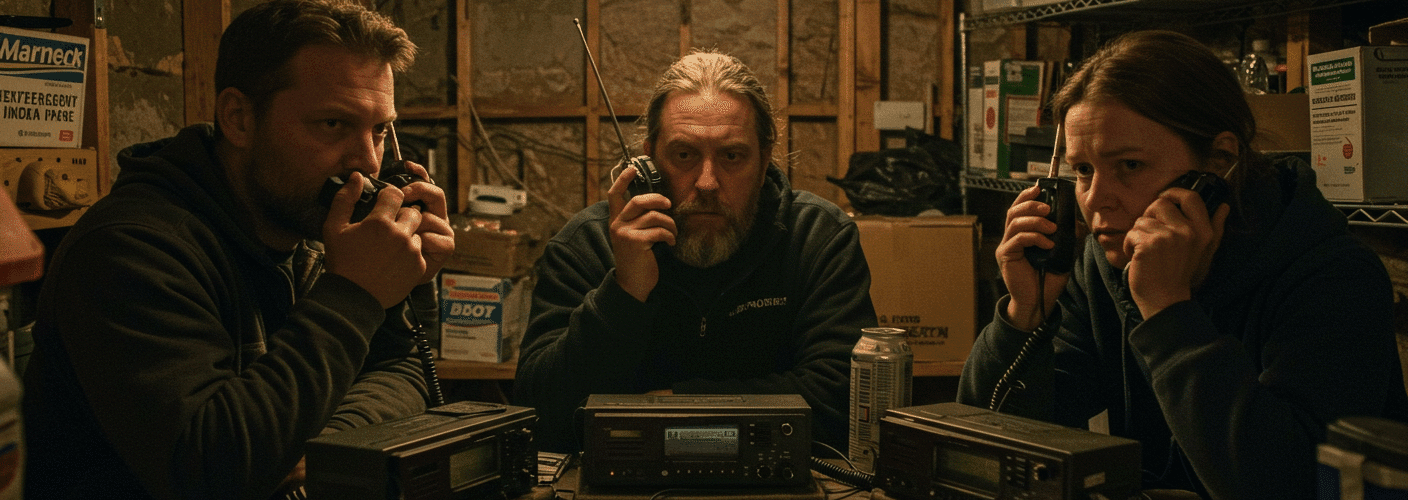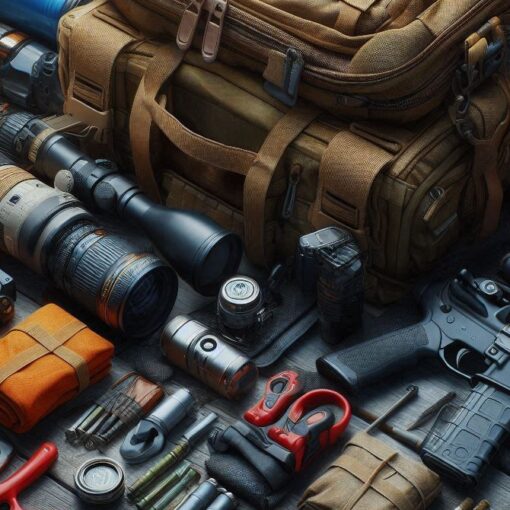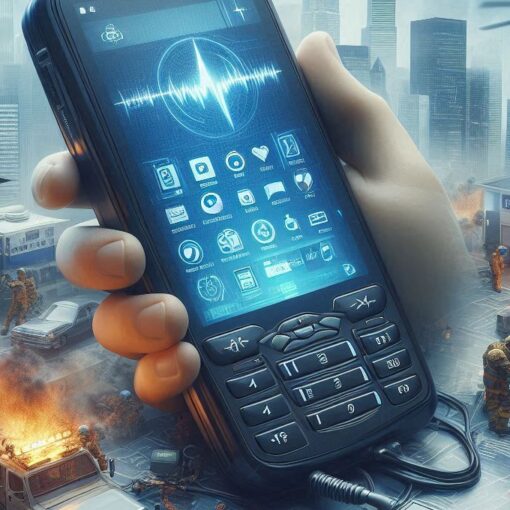Please Note: This post may contain affiliate links. If you click one of them, we may receive a commission at no extra cost to you. As an Amazon Associate, I earn from qualifying purchases.
Having the correct gear may make all the difference when it comes to being ready for anything, from a natural disaster to the unexpected twists of life. I mean, have you ever tried to open a can of beans with your hands? Warning: It’s not pretty! So, let’s talk about some important things that every prepper should think about getting.
Top Takeaways and Key Concepts
- Store at least one gallon of clean water per person daily and rotate supplies every six months.
- Build a complete first aid kit with bandages, antiseptics, pain relievers, and specialty items like tweezers.
- Carry essential tools such as a flashlight, multi-tool, paracord, duct tape, and portable charger.
- Create an emergency communication plan using walkie-talkies and designated meet-up locations.
- Add comfort items like games or books to reduce stress and maintain morale during crises.
Summary of This Article
This article explains how having the right emergency gear can make disaster situations safer and less stressful. It emphasizes stocking essential food and water, as well as tools to purify and store water long-term. A well-equipped first aid kit prepares you for minor injuries, while tools like flashlights, paracord, and multitools help solve unexpected problems. Communication tools such as walkie-talkies keep loved ones connected when cell service fails, and comfort items help maintain emotional well-being during difficult times. The article also highlights the importance of community support and regular emergency drills to stay ready for anything life throws your way.
Video of This Article
Food and Water: The Basics of Survival
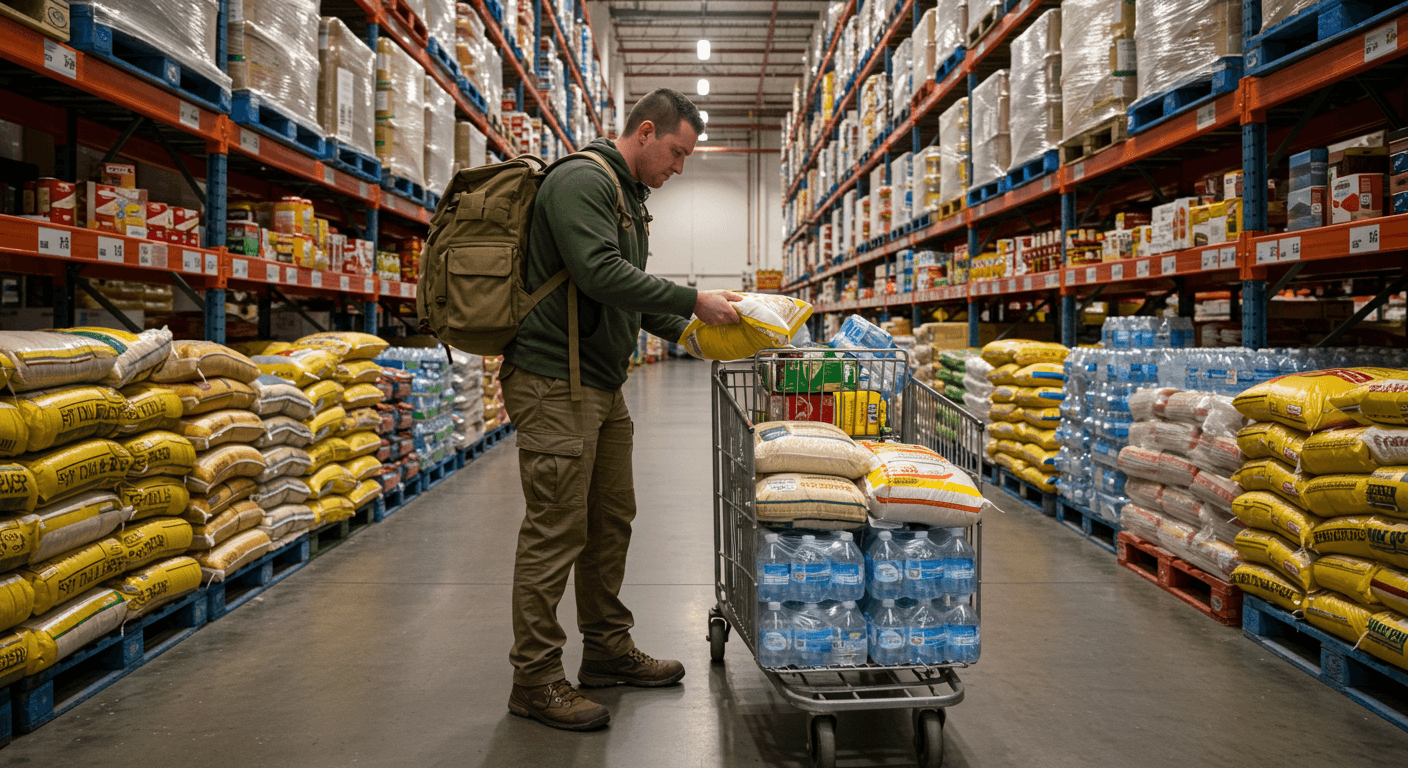
Food and water should be your primary priority. You could think that a couple bags of chips will be enough, but trust me, when things get rough, you’ll want something more filling. Canned products, dried fruits, nuts, and even freeze-dried meals are all fantastic choices because they don’t go bad. They last longer than a typical sitcom rerun and give you the vitamins and minerals you need to stay energized.
Let’s talk about water now. Did you know that people can live for weeks without food but only a few days without water? That’s a scary thought! It is very important to have at least one gallon of water per person stowed away. This may seem like a lot, but when you think about how much you need it for drinking, cooking, and cleaning, you’ll see how important it is. Imagine yourself in a circumstance where the water runs out and your fridge has turned into a frozen box of sadness. Not fun!
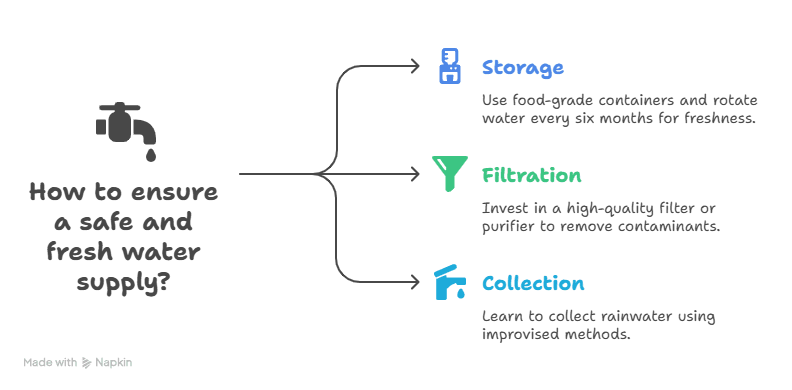
If you’re feeling brave (or maybe just a little fancy), there are filters and purification tablets that can make water that isn’t safe to drink safe to drink. You could be the hero of the day if you could change dirty river water into clean water! If that sounds like too much work or if you’re not ready for your survivalist reality show debut, just filling some strong containers with clean water will work just as well.
Don’t forget about those cute little water bottles that seem to proliferate in your kitchen cupboard. They’re great for emergency kits! I mean, who doesn’t have at least five half-empty bottles lying around? You may take them on the fly or keep them in your emergency backpack. Just make sure they don’t have any BPA in them, because no one wants chemicals getting into their water during a crisis.
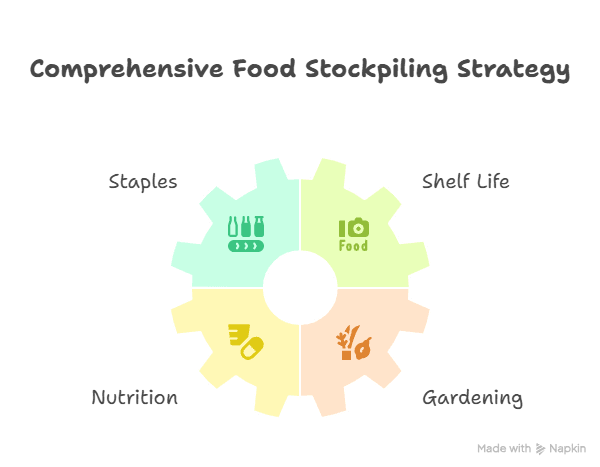
And here’s a tip: put dates on your containers so you know when to restock. If you don’t keep water properly, it can develop an unpleasant taste over time because of bacteria or algae growth. So, every six months or so, get rid of old supplies and get new ones. This manner, you’ll always have clean water to drink should something bad happens.
Also, think about buying bigger storage options, including rain barrels or giant jugs that are made just for long-term storage. Not only do these save space, but they also make sure you have enough supplies on hand in case of a long-term need. And hey, if nothing else, they are fantastic things to talk about at parties! “Oh, this? This is just my emergency technique for collecting rainwater. Who wouldn’t want to know more about that?
In the end, being hydrated should be at the top of everyone’s prepper list because your health and well-being depend on having access to clean drinking water. So, get some containers and fill them up; you’ll be glad you did when something unexpected happens!
First Aid Kits: Band-Aids Aren’t Just for Kids
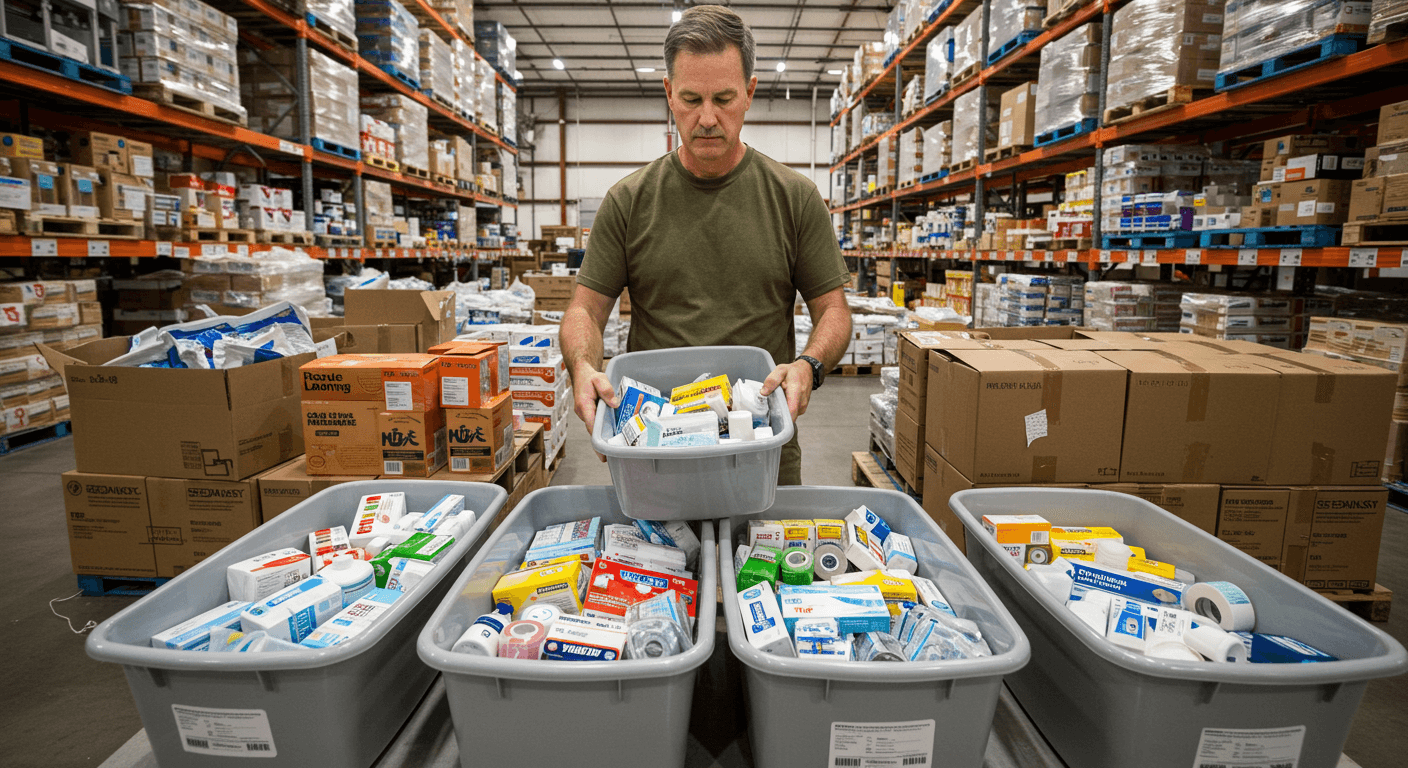
The first aid kit is next. It’s your best friend when things go wrong. You might believe you have this under control with a few Band-Aids sitting around (probably stuck beneath your couch cushions), but let’s be honest: accidents happen! A good first aid kit should have sticky bandages in different sizes, antiseptic wipes to clean cuts (because who wants an infection?), gauze rolls for bigger injuries, and pain medicines because no one wants to have a headache when things are going crazy.
Also, it’s a good idea to include things like tweezers for splinters and burn cream, because nothing ruins a camping trip faster than inadvertently touching that hot marshmallow stick. Seriously, who hasn’t wanted to eat a perfectly toasted s’more but ended up with a blistering finger? I mean, you’re out there trying to enjoy nature, not trying out for a cooking show that went bad! So, having some burn cream on hand will help your taste senses and your sanity.
Now let’s talk about those annoying splinters. It seems like they constantly get into our fingers while we’re attempting to show off our survival skills in the outdoors. You need a basic set of tweezers; they’re like having a small surgical kit in your pocket. Just picture this: you’re sitting around the campfire, showing off how good you are at lighting fires (you know, rubbing two sticks together like a pro), and then bang! A piece of wood that shouldn’t be there pokes you. You may swiftly get rid of that annoying pest with tweezers and go back to enjoying your evening under the stars.
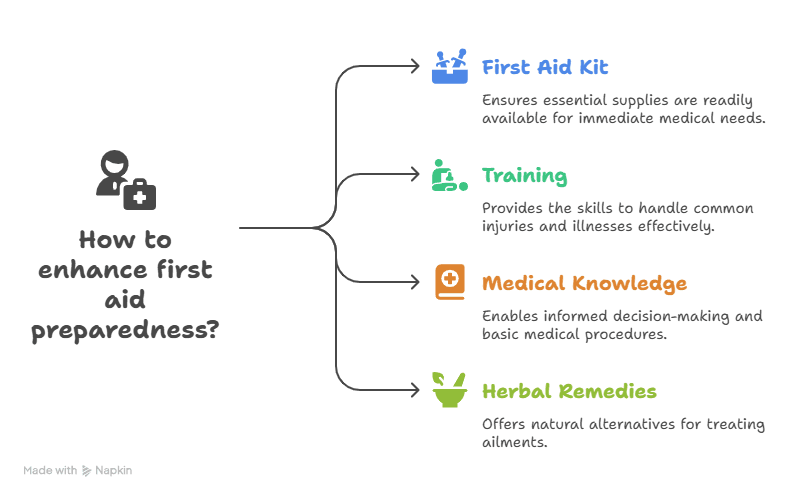
And if you’re feeling really brave or live near regions where snakes like to hang out (yikes! ), you might want to add a snakebite kit too! You never know when you’ll need it! I mean, yeah, most people think they won’t see a snake while hiking, but they do. That pleasant walk suddenly turns into an adventure that gets your heart racing! You can be ready for everything Mother Nature throws at you if you have a snakebite kit. These kits usually have everything you need, from pressure bandages to instructions on what to do if you come across Mr. Slithery.
Don’t forget about other first-aid supplies you might need, such antiseptic wipes and gauze wraps. Believe me, those little packets can save your life when you fall down a hill or when someone thinks it’s fun to play “let’s run through the woods without looking.” Things happen, especially while you’re having fun, therefore it’s important to be able to clean and heal wounds very away.
Lastly, you might want to add some painkillers that you can get without a prescription. These small pills can make a big difference in keeping spirits high during outdoor adventures, whether it’s headaches from too much sun or tired muscles from hiking ten miles (because who doesn’t want to believe they’re Bear Grylls?).
To sum up, getting ready for small problems while appreciating nature doesn’t have to be scary. If you carry these things—tweezers for splinters, burn cream for those unfortunate marshmallow interactions, and snakebite kits for thrill-seekers—you’ll be ready for anything that comes your way. And when someone gets hurt or requires help, you’ll be the hero of your group. How great is that?
Tools and Gear: Because MacGyver Wasn’t Just Fictional
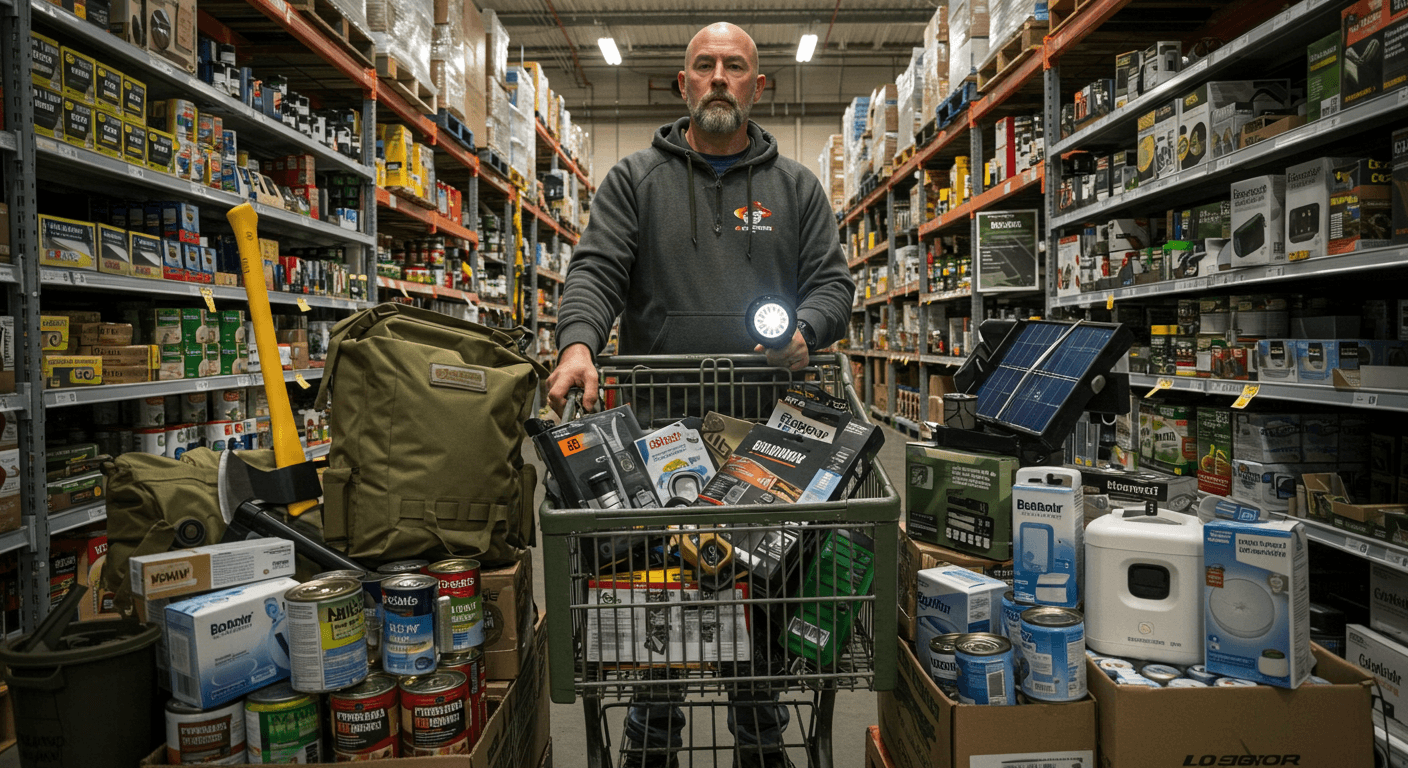
Tools are one of the most important things you need to get through the day. Imagine that you have to mend something quickly in an unforeseen situation. Do you really want to depend on duct tape by itself? I know duct tape is great, but having things like multi-tools or survival knives can be really helpful.
I suggest bringing things like torches (with additional batteries), portable chargers for your electronics (since being connected is important), and even rope or paracord, which can be used for a million things, like creating shelters or tying down gear. Have you ever really tried to put up a tent without some strong cord? It’s like attempting to make a cake without flour—there’s no purpose!
Let’s start by talking about flashlights. Imagine this: it’s dark outside, you’ve just done a long day of hiking, and all of a sudden you realize that your phone’s flashlight isn’t going to work. In an emergency, a good flashlight can be quite helpful. It’s quite important to have a reliable light source when you’re walking in the woods or looking for that hidden snack cache in the back of your car. Just remember to bring additional batteries, because nothing ruins a nice night beneath the stars faster than a flashlight that doesn’t work when you need it most!
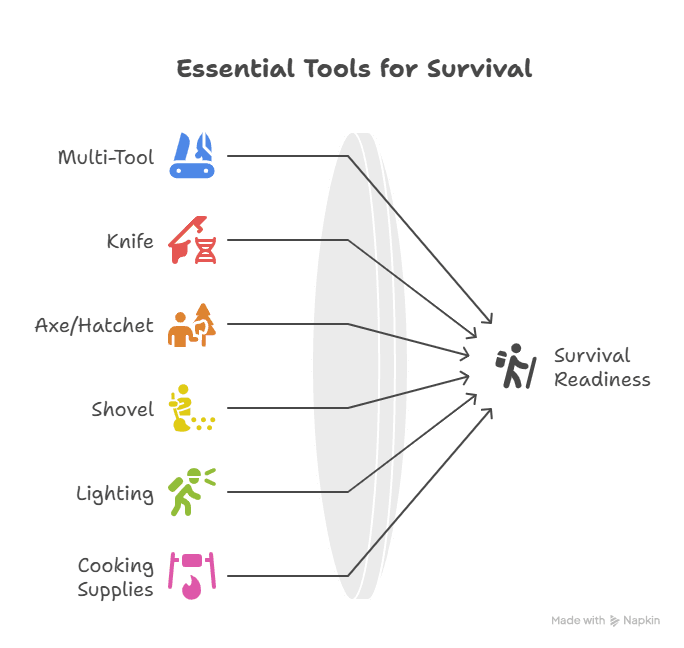
Now let’s talk about portable chargers. They are lifesavers! It’s more vital than ever to stay connected in our tech-driven world. Having backup power can make a big difference, whether you’re trying to get help or just want to share your exploits on Instagram (let’s be honest, those sunset pictures aren’t going to post themselves). Think about being in the woods and finding out that your phone is at 5% battery and you can’t charge it. Panic mode is on! So go ahead and buy some good portable chargers. They’ll keep your devices charged when you need them.
And then there’s rope or paracord. This stuff is pure magic, let me tell you! You might believe that rope is just something you use to tie things up, but it’s not! The versatility of paracord is remarkable. Do you need to make a shelter in case of an emergency? Check! Do you want to keep your gear from blowing away on a windy night? Check again! You could even use it as shoelaces in a hurry or make fishing lines if you get hungry while camping (though I’m not sure how good I am at fishing). Honestly, planning beforehand makes everything simpler when things go wrong!
Another fantastic thing to carry is duct tape—yes, I said duct tape! This amazing tape can restore almost anything, from broken gear to ripped tents. Duct tape would surely be one of MacGyver’s favorite tools. Also, it’s light and easy to store.
Lastly, don’t forget about Swiss Army knives or multi-tools. They’re like having a whole toolbox in your pocket! These useful tools have a wide range of uses, from screwdrivers to bottle openers (since you should always have food with you when you’re out and about). They’re great for any situation that comes up while you’re out exploring.
In short, being thoughtful about what you carry, such flashlights, portable chargers, adaptable ropes or paracords, and even duct tape, will make sure you’re ready for everything that comes up on your outdoor travels. When things don’t go as planned, being ready equals less stress and more fun. You’ll be glad you did when everyone else is lost in the dark!
Communication Plans: Stay Connected When It Counts
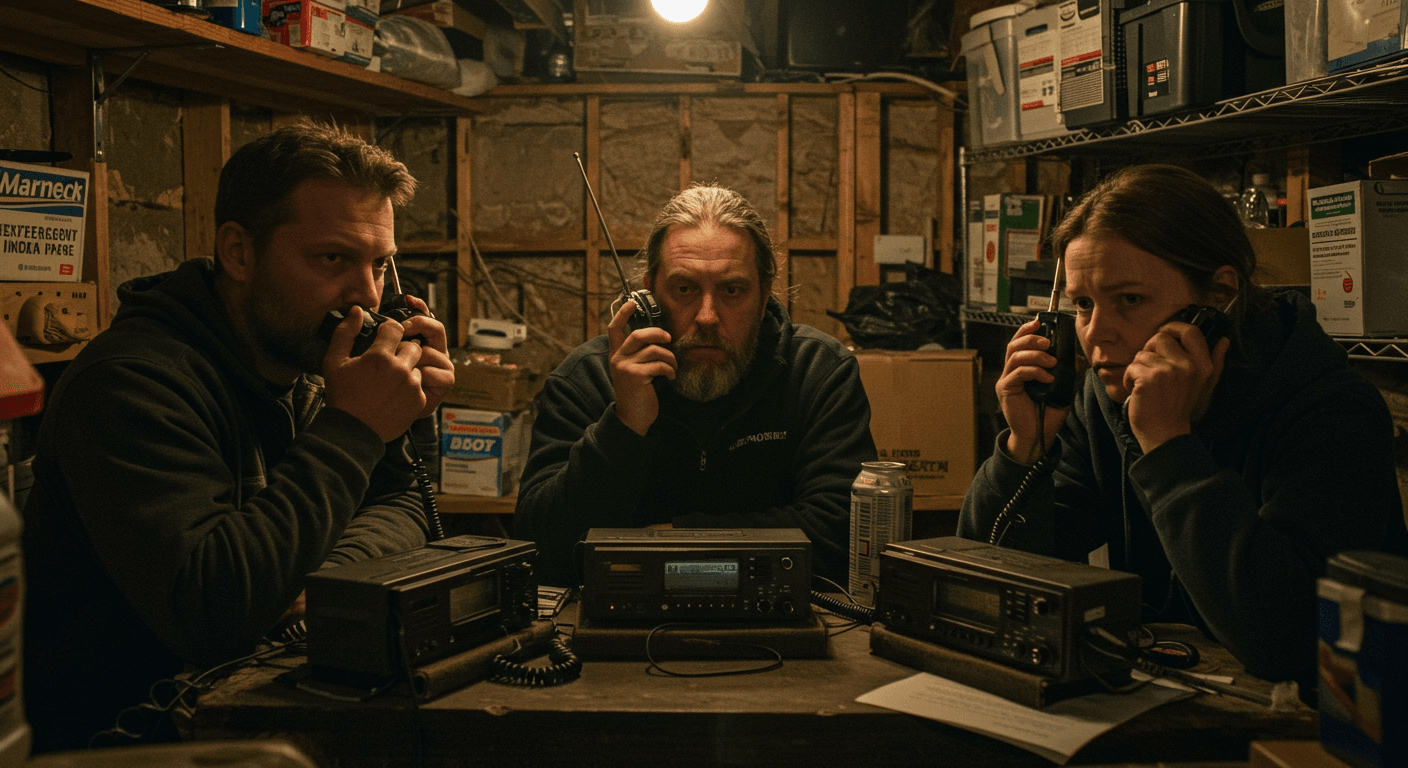
Don’t forget to talk to each other! How will you get in touch with your loved ones if a crisis happens and cell towers go on vacation (how rude)? It’s really important to have a plan on how to talk to people in an emergency. Set up gathering places outside of your home or neighborhood where everyone knows to go if things get out of hand.
And speaking of planning, it’s not just stylish to have walkie-talkies or two-way radios hidden somewhere; it’s also useful! These little gadgets are lifesavers when we’re stressed out and our phones might not work. Picture this: you’re in the thick of a mess—maybe a storm is coming and everyone is trying to figure out where to run. Your phone abruptly dies when the battery level dips below 1%. You start to panic as you look for your family members in the middle of the turmoil. Believe me, no one likes to play hide-and-seek while looking for loved ones in an emergency!
In these situations, walkie-talkies can make a huge difference. These helpful devices work on radio frequencies, so you can talk to people even when everything else fails. This is different from cell phones, which need networks and towers (which might be down). It’s like having your own private way to talk! You can talk to your family or group without worrying about signal problems or dead zones.
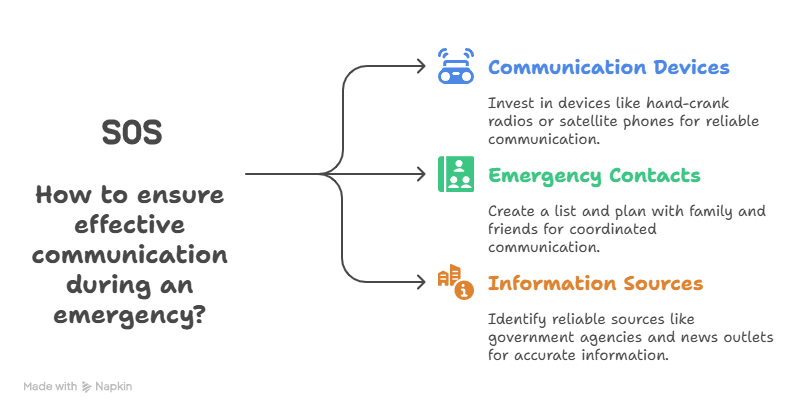
Also, they’re quite simple to utilize. You don’t have to deal with sophisticated apps or touchscreen problems—just push a button and chat! If I can use one without getting lost in tech talk, anyone can! Because they are so simple, they are great for youngsters too. Think of sending your kids on an adventure while knowing they can get in touch with you right away if something goes wrong.
Let’s speak about range now because not all walkie-talkies are the same. Some might only go a few miles, but others can go much farther, making them great for hiking vacations or big properties. Think about how far away you’ll probably be in an emergency when you buy these items. You don’t want to be hollering across the neighborhood like a modern-day Shakespearean tragedy, therefore it’s always best to overestimate than underestimate.
It’s interesting that a lot of models come with built-in flashlights and weather notifications. Talk about doing a lot of things! If you become stuck outside in bad weather (or just need some illumination while going through your emergency kit), those extra features could save the day or at least make things more interesting.
Battery life is also important; seek for solutions with rechargeable batteries or power sources that last a long time so you don’t have to run about shopping for new AA batteries when you need them the most (because we all know how annoying that can be).
To sum up, walkie-talkies or two-way radios are definitely something you should have on your survivalist basics list. They provide us peace of mind by keeping everyone in touch without using technology that might not work when we need it most. So get a few before your next trip. You never know what can happen. You may be the coolest mom on the block who knows how to talk to people in an emergency like a pro!
Comfort Items: Keeping Spirits High
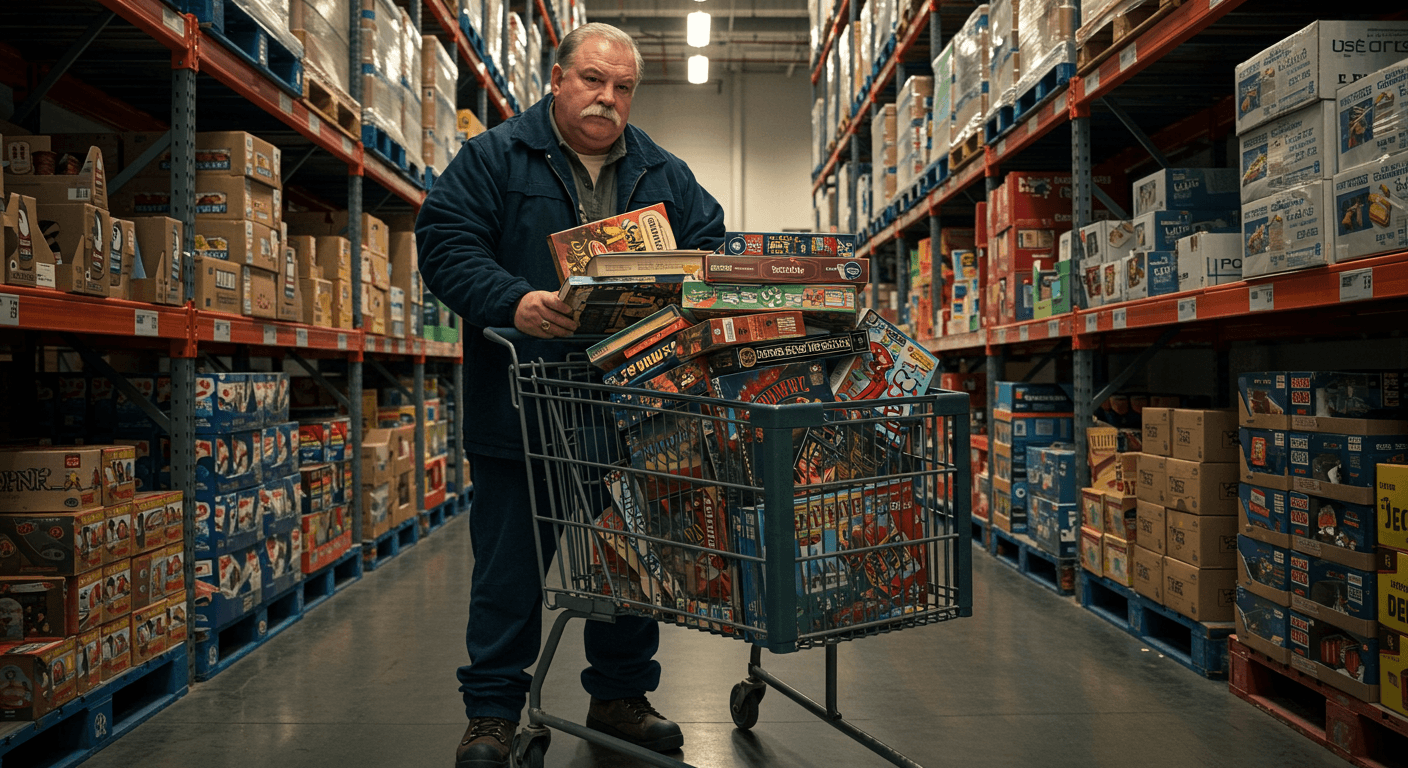
Let’s become comfortable with comfort goods now! Yes, we’re talking about staying alive, but mental health is important too! Pack games or novels that can keep both kids and adults busy when things get hectic. Let’s face it: stress reduction is important when things are crazy.
Consider adding puzzles or card games that make you giggle when things are rough. You might be amazed at how much fun simple things can be when things are hard. When the world outside feels like a crazy rollercoaster, having some fun indoors may really lift everyone’s spirits. Do you remember when it rained and you and your family would all sit around a board game? Laughter is a great way to break up stress, just like a hot knife into butter!
Puzzles are especially fun because they make people work together. You know that great feeling you get when you finally discover the correct piece after what seems like forever? It’s like winning the lotto but not getting any money! They are also great for people of all ages, from little kids trying to fit together colorful pieces to experienced pros who can finish 1,000-piece landscapes in record time. And let’s be honest: there’s nothing like getting closer to someone when they unintentionally flip the puzzle box and send half the pieces flying across the room!
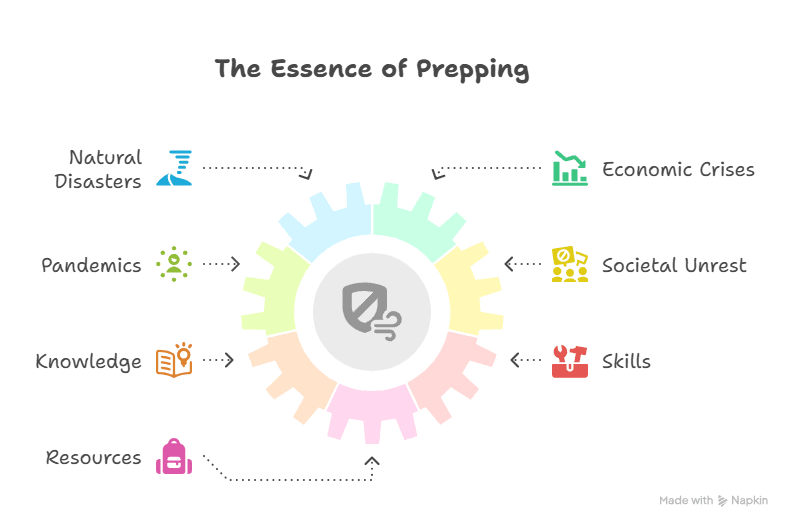
Another great choice is card games. These games may keep you busy for hours. Some of my all-time favorites are Uno and Settlers of Catan, which I may or may not have lost my cool over once or twice. They get people to compete in a fun way and make memories that will remain long after the storm is over. At least until someone brings up that one game night when Aunt Betty turned out to be a merciless card shark!
Also, don’t forget how powerful laughter can be when you’re under a lot of stress. One of the finest ways to relieve tension is to laugh. When you’re around family and friends, making jokes and trying to defeat each other in a game of Go Fish helps everyone forget about the mayhem outside, even if it’s only for a little while.
And let’s not forget about being creative! How about adding some art tools as well? Making art or drawing together could result in funny masterpieces (or total failures) that you will treasure as memories of your emergency adventures. You could even put on tiny talent shows where people read aloud from their favorite books. Who wouldn’t want to see Dad dress up as Shakespeare and recite in an old bathrobe?
Putting away these enjoyable distractions is important for keeping your spirits up when things go rough. Put those card decks and puzzles in your emergency kit. They might just rescue the day by converting what could have been a boring time into fun family moments full of laughter and stories you’ll tell for years to come! Even when storms are raging outside, it can still feel like home sweet home inside, with laughter bouncing off the walls!
Community Resources: Teamwork Makes the Dream Work
Don’t forget about the resources in your town! Most of the time, local groups have prepared for emergencies. They might give shelters or other help when circumstances get rough. Getting to know your neighbors before a tragedy hits makes your relationships stronger than any superhero movie plot. You never know whose lawn might become your safe place!
One of the best things you can do to get ready for anything that comes up is to join a local preparedness organization. Think about it: a lot of individuals getting together to share their ideas and resources—it’s like having a small think tank right in your neighborhood! You might find that your neighbor down the street has some great equipment or ideas that you never thought of. To be honest, who knew Bob from next door was an excellent at finding food? All of a sudden, you’re learning how to tell which plants are safe to eat while talking over coffee!
Members of these organizations often get together to talk about what they’ve learned and what they’ve been through. Instead of crayons and macaroni art, you show off survival gear. You may learn about the best ways to clean water, hear real-life stories about emergencies, or even get tips on the best flashlights (since let’s face it, no one likes to be left in the dark—literally!). Also, these meetings often feel more like potlucks than serious planning sessions because there is generally food, and who doesn’t enjoy snacks?
And since we’re talking about pooling resources, a lot of preparedness groups can buy things in bulk or get discounts on them. Imagine being able to get what you need for a lot less money because you worked with other people! It’s not only useful, but it also helps members get to know one other better as they work toward a common objective. Everyone is better prepared when you make more relationships in your neighborhood.
It’s interesting that working with others instead of alone may significantly impact how you think about being ready. When we work together as communities, problems seem less scary. It breaks down what could seem like an impossible job into small, doable tasks that friends and neighbors can help with. During hard times, you’ll count on each other for assistance, not simply with resources but also with your feelings.
When you hear thunder rumbling outside your window, for example, think about those times when fear starts to seep in. Instead of feeling alone with your fears, picture a group chat full with messages about safety plans or reminders to check on each other when the weather gets bad. That feeling of being together is priceless!
So why not go for it? You can find local preparedness groups online or at community centers. There is sure to be one close by! When you enter this world of shared information and experiences, you’ll see that prepping isn’t just about getting ready; it’s also about making connections that will help you long after any emergency. It’s nice to know that there are people out there who are willing to help when things become rough, isn’t it? We’re stronger together, and we’re better prepared for anything life throws our way!
Practice Drills: Prepare Like It’s Game Day
Last but not least, practice drills are really important! Set aside time every few months for practice situations so that everyone knows what to do when things get scary. A fire drill isn’t just for kids anymore! Think about what might happen if an earthquake hit while you were watching TV or if water started to rise at your door.
These activities get everyone ready mentally and help them bond over fun times, even when they’re talking about serious things. After all those practice runs together as families, they make memories that will last a lifetime and teach important lessons along the way.
Frequently Asked Questions
What are the most important supplies to start with for emergency preparedness?
The top priority is food and water. Store at least one gallon of water per person per day and stock long-lasting foods like canned goods, nuts, and freeze-dried meals to ensure you stay energized during emergencies.
How often should I rotate my emergency water supply?
Water should be replaced or refreshed every six months to prevent bacteria growth and bad taste. Label water containers with dates so you always know when it’s time to rotate your supply.
What should be included in a proper first aid kit?
A good first aid kit should include bandages, antiseptic wipes, gauze, pain relievers, tweezers for splinters, burn cream, and optional items like a snakebite kit for outdoor emergencies.
Why are tools like paracord and multi-tools essential?
Tools such as paracord, duct tape, and multi-tools are versatile and can help build shelters, secure equipment, repair broken gear, and handle unexpected challenges when you’re away from home or in a crisis.
How can I communicate if cell towers go down during a disaster?
Walkie-talkies or two-way radios are reliable alternatives because they use radio frequencies instead of cell networks. They help you stay connected with family or your group when phones fail.
Why include comfort items in an emergency kit?
Comfort items like games, books, and puzzles help reduce stress and anxiety, especially during long periods without power or while waiting out a storm. They boost morale and help families stay calm.
How can my community help during an emergency?
Local preparedness groups, neighbors, and community centers often share resources, knowledge, and support. Working together builds stronger response systems and ensures no one is left struggling alone during a crisis.
Suggested Resources
Emergency Preparedness Tips
https://www.ready.gov/prepare
Survival Skills Everyone Should Know
https://www.outdoorlife.com/survival-skills-everyone-should-know
First Aid Kit Essentials
https://www.redcross.org/get-help/how-to-prepare-for-emergencies/first-aid-kit.html

Kevin Collier is a seasoned outdoor enthusiast and writer for Trekbug.com, specializing in outdoor adventures, survival strategies, and prepping insights. With a deep love for nature and a commitment to self-sufficiency, Kevin empowers readers to embrace the wilderness confidently. He shares valuable tips, practical techniques, and inspiring stories, helping both novice and experienced adventurers develop essential skills for surviving and thriving in the great outdoors.

